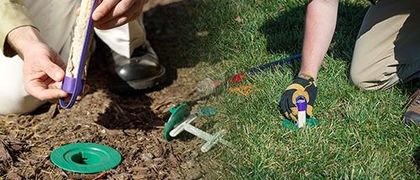Do Ultrasonic Pest Repellers Work on Roaches?

You’ve probably seen those plug-in ultrasonic pest repellers on Amazon or at your local hardware store. They promise to send cockroaches and other pests running by blasting high-frequency sound waves we can’t hear. Sounds like an easy fix, right? But if you're dealing with roaches in your kitchen or basement, you’re probably wondering: do ultrasonic pest repellers work on roaches?
It’s easy to see why these devices have caught on. No sprays, no traps, just plug it in and let it work, right? But when it comes to pests like cockroaches, which are known for their resilience and ability to hide in the smallest cracks, the question becomes whether these devices can reach or affect them at all.
With cockroach infestations being especially common in basements, kitchens, and bathrooms, homeowners in the Midwest are understandably skeptical.
Let's take a closer look at how these electronic devices are supposed to work and whether they live up to the hype.
Key Takeaways
- Ultrasonic pest repellents lack consistent scientific backing, especially for cockroach control.
- Roaches adapt quickly to sound waves and often nest in areas the devices can’t reach.
- DIY baits and professional treatments are far more effective, particularly when it comes to German cockroaches.
- If you’re seeing more than one roach, it may be time to skip the gadgets and call in a pest control service before the problem spreads.
How ultrasonic pest repellers are supposed to work
Ultrasonic pest repellers claim to emit high-frequency sound waves that disrupt a pest's nervous system or create an uncomfortable environment. The idea is that pests like cockroaches, fleas, bed bugs, and even rodents will flee your home in search of quieter places.
For homeowners, especially those in the Midwest dealing with seasonal pest problems, the appeal is clear: no mess, no odors, and no need to touch anything.
Most of these devices are designed to plug in directly to a wall outlet and cover a single room. The product packaging often lists cockroaches, mice, and spiders among the pests it’s supposed to repel.
But here’s the catch.
What the research says
Despite being popular on online marketplaces, there is limited scientific evidence showing that ultrasonic pest control devices are effective, especially when it comes to cockroach control.
Some studies, like those done by entomologists at Kansas State University, have found no consistent reduction in cockroach activity when using ultrasonic devices. While roaches might react briefly to certain sound frequencies, they tend to adapt quickly.
The Federal Trade Commission has even warned some manufacturers in the past. Their concern? Unproven claims about these devices. That should tell you something.
So if you’re hoping a little box plugged into your living room wall is going to handle a cockroach infestation, you may be disappointed.
Why are roaches tough to repel
Cockroaches are incredibly adaptable. German cockroaches, which are common in homes throughout Iowa, Nebraska, and Missouri, have a knack for hiding deep in crevices, cracks, and inside appliances. Ultrasonic pest repellers don’t produce sound waves strong enough to penetrate through walls or furniture, meaning they might not even reach the roaches.
Worse yet, if you’re already seeing roaches out in the open, it could be a sign of a larger infestation. These pests don’t typically show themselves unless they’re running out of space or food.
What works for repelling roaches
If you're serious about repelling roaches or eliminating a cockroach infestation, here’s what we recommend instead:
- Sanitation: Roaches are scavengers. Keeping food sealed, wiping down counters, and vacuuming crumbs is one of the simplest forms of pest management.
- Seal entry points: Use caulk or weather stripping to close off entry spots.
- Boric acid or bait gels: These are more effective DIY tools than ultrasonic sound. Just be cautious using them around kids and pets.
- Professional pest control service: This is often the only way to fully eliminate roaches, especially if German cockroaches are involved. These pests require targeted products like IGRs (insect growth regulators) and follow-up treatments to control reproduction.
Here at Miller Pest & Termite, we don’t rely on gimmicks. Our approach is comprehensive and designed for long-term results. Whether you're dealing with roaches in your bathroom, basement, or kitchen, we’ll help identify the source and recommend a treatment plan that works.
Should you try an ultrasonic pest repeller?
If you’re dealing with a mild pest issue or just want to try something for peace of mind, an electronic pest repeller might not hurt. But don’t expect it to solve a serious roach infestation. And if you're already seeing signs of cockroach droppings, egg casings, or frequent sightings at night, it's time to take stronger action.
Final thoughts
So, do ultrasonic pest repellers work on roaches? Not really. At best, they’re a temporary deterrent. At worst, they give you a false sense of security while the problem worsens behind the scenes.
There’s no shortcut when it comes to serious pest control. While we understand the temptation to go for a plug-in device over a professional solution, cockroaches are one of the most difficult household pests to fully eliminate without expert help. Whether you're dealing with German cockroaches that multiply fast or American cockroaches making a home in your crawlspace, trust the process that’s backed by science, not just marketing.
If you’re in Des Moines, Omaha, or Kansas City and want a real solution, give us a call. We’ve helped hundreds of Midwest homeowners regain peace of mind, and we’re ready when you are.
Get Help Now!







